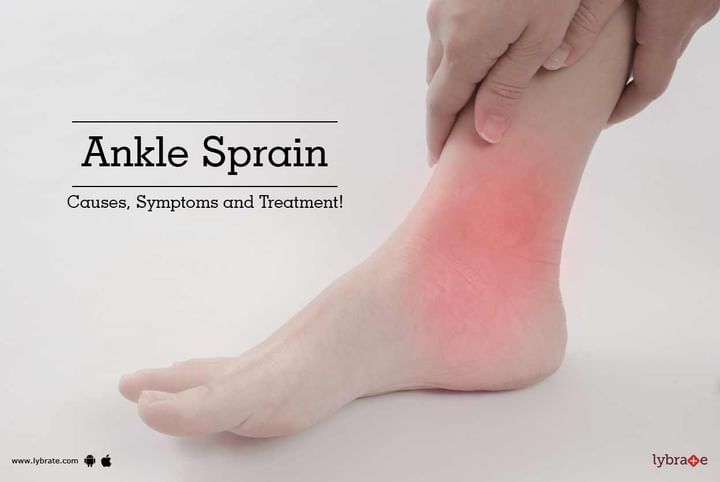Ankle Sprain: Causes, Symptoms and Treatment!
An ankle sprain can make life miserable. A sudden twist or stretching (due to incorrect walking, incorrect posture, wearing high heels, walking on an uneven and rough surface, exercise, games) can result in ligament(s) tear (partial or complete tear), affecting the ankle. An ankle sprain is often confused with a twisted ankle. However, the two are different as chalk and cheese. A sprained ankle can be extremely painful, taking few weeks to months to heal completely (depending on the severity).
Symptoms:
An ankle sprain is independent of age and sex, affecting anyone and everyone under the sun. The symptoms characteristic of an ankle sprain includes:
- The affected region of the ankle may swell up immediately.
- Difficulty in walking. In severe forms, a person may find it difficult to place a step.
- The area appears bruised and tender.
- Excruciating pain and discomfort (severe case).
- Stiffness and, in some cases, discoloration of the skin around the tear.
At no point should the sprain be taken lightly. Seek medical assistance at the earliest. Negligence on your part can aggravate the situation. In extreme cases, an ankle sprain can add to your agony and discomfort, affecting the joints, bones, blood vessels, tendons, and cartilage.
Diagnosis and Treatment:
Diagnosis:
Accurate diagnosis can make the treatment effective, thus accelerating the recovery process. In case of an ankle sprain;
- Physical examination of the affected area and a thorough case study is an important diagnostic step followed by many doctors.
- X-ray of the affected ankle region can help in a better and more accurate diagnosis.
Treatment:
The course of treatment depends on the extent of the damage. In case of a minor sprain, doctors mostly recommend
- Keeping the affected ankle area bandaged (ACE bandage) and well protected. A crutch or a brace is a blessing for people who face difficulty in walking.
- Time and again, apply a cold compress on the sprained ankle. A cold compress can help reduce the swelling effectively.
- In case of extreme pain and swelling, your doctor may recommend an acetaminophen (Tylenol) or ibuprofen
- Rest as much as possible. While sleeping, use cushions or pillows to keep the leg elevated.
In rare cases where the sprain refuses to heal and becomes unresponsive to the above treatment, doctors may recommend an Arthroscopy or a Reconstruction surgery.
Precaution and Care:
A little alertness and agility on your part can help to deal with an ankle sprain better.
- In the case of a severe sprain, try and avoid self-medication as much as possible. It can do you more harm than good.
- Exert minimum or no pressure on the affected ankle area.
- Indulge in some strengthening exercise as recommended by your physician. It is advisable that you warm up before any exercise.
- Avoid heavy, strenuous work as much as possible.
- Wearing correct footwear is important. Women who have had an ankle sprain should avoid wearing heel shoes. If you wish to discuss about any specific problem, you can consult an Orthopedist.



+1.svg)
